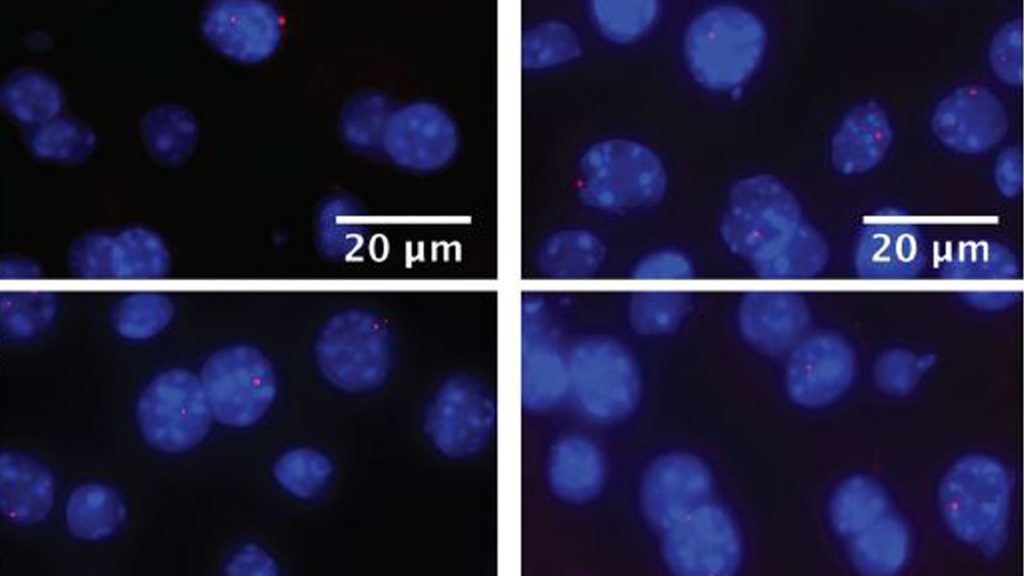
1. Smear showing myeloma cells. [MGG; × 400]. 2. Histopathology section
Chromatin associated with the nuclear membrane gives the nuclei the appearance of a clock-face or cartwheel. The cytoplasm contains a prominent Golgi apparatus and endoplasmic reticulum. The precursors of plasma cells are plasmablasts which migrate to bone marrow after stimulation by cytokines from helper T cells in the germinal centers of.

Transcriptional Architecture and Chromatin Landscape of the Core
"Clock-face" chromatin pattern. Small dots symmetrically rim the nuclear membrane - like the numbers on a clock. Abundant cytoplasm. Nucleus-to-cytoplasm ratio ~1:2 Perinuclear hof (prominent Gogli apparatus). Pale perinuclear crescentic - may be up to the size of the nucleus in active plasma cells. Note:

Chromatin landscape and circadian dynamics Spatial and temporal
Definition Solitary lesions of clonal plasma cells that are cytologically, immunophenotypically, and genetically similar to plasma cell myeloma. Clinical Features Bone pain and cord compression due to vertebral lesions. Localization Dura-based (D.D. meningioma), intrasellar (D.D. pituitary adenoma), rarely intraparenchymal.

Schematic model depicting the dynamic chromatin changes at the core of
The well-differentiated or "mature" plasma cell (so called Marshalko-type) shows the characteristic round eccentric nuclei with "clock face" chromatin without nucleoli and abundant dense basophilic cytoplasm with clear perinuclear hof corresponding to the Golgi zone.

The many faces of chromatin assembly factor 1 Trends in Plant Science
Plasma cells (arrows) have eccentric nuclei characterized by a "clock face" appearance to the chromatin. The cytoplasm may range from basophilic to blue-gray and can contain vacuoles. Download Image Share Image Views: 10344 Downloads: 42 Size: 0.16 MB This image belongs to set: Plasma cells Download Set

Chromatin Structure and Function as a Biological Clock during Aging
The plasma cells have eccentric nuclei with characteristic "clock-face" chromatin without nucleoli ( Fig. 9D). 30. Lymphoma. Age and Sex . Primary lymphoma of the sacrum has a peak incidence during the second and third decades of life, affecting more males than females at a ratio of 2:1. 5.

Plasmablastic lymphoma cells with a plasmacytoid appearence with a
The chromatin at clock-controlled genes undergoes rhythmic modifications mediated by the activities of histone modifiers and chromatin-remodeling proteins, thus facilitating rhythmic gene expression over the 24-hour cycle [29-31]. There is accumulating evidence showing that these proteins interact with core clock components to impose temporal.

Clockdependent chromatin topology modulates circadian transcription
Eccentric nucleus with clock-face chromatin; Now 2/3 of cell is cytoplasm; Russell body: plasma cell that is filled with antibodies and the nucleus has been pushed out. Sign of really chronic inflammation Blood smear with immune cell s. Giant Cells. Syncytium of merged epithelioid histiocytes with multiple nuclei Multinucleated Langhans giant cell

Pathology Cases LN review
Histochemistry and Cytochemistry Bulk download StatPearls data from FTP RISH V. Application to monoclonal antibody production. Immunodeficiency. Immunodeficiency. Histology, B Cell Lymphocyte. Mechanisms that determine plasma cell lifespan and the duration of humoral immunity.

60+ Beautiful Clocks Face That Make The Room Where The Heart Is
Abstract. Chromatin organization plays a crucial role in gene regulation by controlling the accessibility of DNA to transcription machinery. While significant progress has been made in understanding the regulatory role of clock proteins in circadian rhythms, how chromatin organization affects circadian rhythms remains poorly understood.

Hormone Pulses and Transcription Bursting Falconieri Visuals LLC
Pathophysiology refers to changes in bodily processes that result from disease. In the case of multiple myeloma (MM), which is a type of bone marrow cancer, the pathophysiology is complex. It can.

Interactive roles of chromatin regulation and circadian clock function
Plasma cells with prominent clock face chromatin Russell bodies Scattered immature plasma cells Scattered Mott cells with grape-like inclusions Board review style answer #3. D. Scattered immature plasma cells are more specific to a neoplastic process compared to binucleation, Russell bodies or mild plasmacytosis.

Transcriptional Architecture and Chromatin Landscape of the Core
Introduction Overview neoplastic proliferation of plasma cells within the bone marrow leads to the production of monoclonal immunoglobulin (Ig) mostly IgG (52%) and IgA (21%) results in skeletal destruction Epidemiology Demographics older adults median age is 66 years of age Risk factors monoclonal gammopathy of undetermined significance (MGUS)

Clockdependent chromatin topology modulates circadian transcription
Mature plasma cells: oval with abundant basophilic cytoplasm, perinuclear hof, round eccentric nuclei, "clock face" chromatin and indiscernible nucleoli Immature plasma cells: higher nuclear / cytoplasmic ratio, more abundant cytoplasm and hof region compared to plasmablastic, more dispersed chromatin, often prominent nucleoli.

Pathology of Multiple Myeloma Pathology Made Simple
Abstract In the fully-developed megaloblast of vitamin B 12 or folate deficiency, unique alterations occur in the chromatin adherent to the nuclear membrane. This chromatin is often tenuously connected to or separated from other chromatin, and gives the nucleus a clockface appearance.

Chromatin landscape and circadian dynamics Spatial and temporal
Another interesting aspect that remains to be fully explored is the evolutionary trajectory of clock and chromatin remodeling. From the initial studies in the model system A. thaliana, research is increasingly advancing in analyses of clock and chromatin function in other non-model plants. The use of multidisciplinary approaches, including.